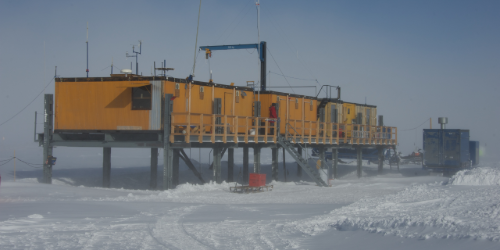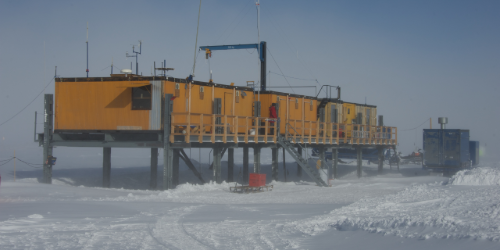Seeking Stardust in the Snow
Sometime in the last 20 million years, one or more stars in the solar neighborhood went supernova, producing clouds of gas and dust enriched with radioisotopes. As the Solar System passes through such a cloud, some of this dust falls onto Earth’s surface, where, under certain conditions, detectable concentrations can accumulate. This is the case far inland in Antarctica, where Dominik Koll, of the Technical University of Munich, and colleagues discovered evidence of interstellar dust in the form of a rare isotope, iron-60 ( Fe). The finding could help pin down the source of the dust more precisely and reveal the history of the Solar System’s interactions with its interstellar environment.
Koll and colleagues collected 500 kg of snow that was less than 20 years old, melted it, and filtered out the solids. The researchers incinerated the residues and used a mass spectrometer to measure the presence of Fe and manganese-53 ( Mn). The latter isotope is produced with Fe when cosmic rays strike interplanetary dust. But the researchers found much more Fe compared to Mn than would be expected from this “local” source. The team also calculated the possibility that Fe from nuclear weapons and power plants had contaminated the snow, but they determined that the presence of artificially produced isotopes should be negligible. The most likely source, they say, is interstellar dust, which is enriched by Fe from supernovae.
The calculated Fe influx matches that deduced for other interstellar-dust deposits found in ocean sediments and lunar soil. Testing for a wider range of radioisotopes in older ice cores could tell researchers when and where the supernovae occurred and when the Solar System entered the local interstellar cloud.
This research is published in Physical Review Letters.
–Marric Stephens
Marric Stephens is a freelance science writer based in Bristol, UK.





